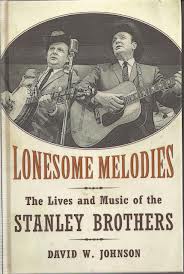“Happy Days” ruined the Everly Brothers for me. For many many years I thought of their music
simply as more of the insipid bland rock & roll from the shows soundtrack (“Wake
Up Little Susie”). It wasn’t until after
I was an adult that I learned how they fit into the country (and rock)
traditions, the links to earlier acts like the Louvins and to rock acts like
the Beatles and the Beach Boys. Only
after all that did I go back & really listen to some of their recordings,
and discover what I had been missing.
Growing up in Kentucky, Will Oldham had a different exposure
to the Everlys. They’re considered much
more of a big deal, and for years there was a music festival held in their
honor in Western KY. So it’s not
surprising that he has fond childhood memories of their recordings.
Dawn McCarthy has worked with Will Oldham before, most
notably on 2006’s The Letting Go. That recording is a quiet masterpiece that
highlighted the interplay of their voices.
Given that track record I was enthusiastic about the potential for this
Everly Brothers project.
The primary challenge of recording an Everlys tribute is how
to handle the vocals. Coming from the
brother duet tradition, the Everlys practiced a subtle yet difficult technique
of synching vocals while harmonizing.
Some claim that due to differences in speech and breathing patterns it
is almost impossible for singers who aren’t siblings to duplicate this
style.
Their answer is to not attempt to duplicate the Everly
Brothers. Rather, they interpret the
harmonies in their own way. Sometimes
Oldham and McCarthy are singing together, other times they are alternating,
often within the same line. Given their
ability to harmonize, this choice works well.
While not being a true copy of the original material, it is true to
their own style.
Another good choice was made with the material. Rather than approaching from a “Greatest Hits”
perspective, What the Brothers Sang
ignores many of the biggest hits to linger on some deep cuts. And perhaps more surprisingly, they focus on
an often ignored time period of the Everly Brothers career-- the late 60s. There’s a relaxed sunshine pop jibe to most
of these recordings. It provides a
warmth that mirrors the warmth of their harmonies.
Placing this album in the context of his career, I would say
that What the Brothers Sang is a mix
of Greatest Palace Songs with a hint
of The Letting Go. Highly recommended for fans for Bonnie “Prince”
Billy or the Everly Brothers.




